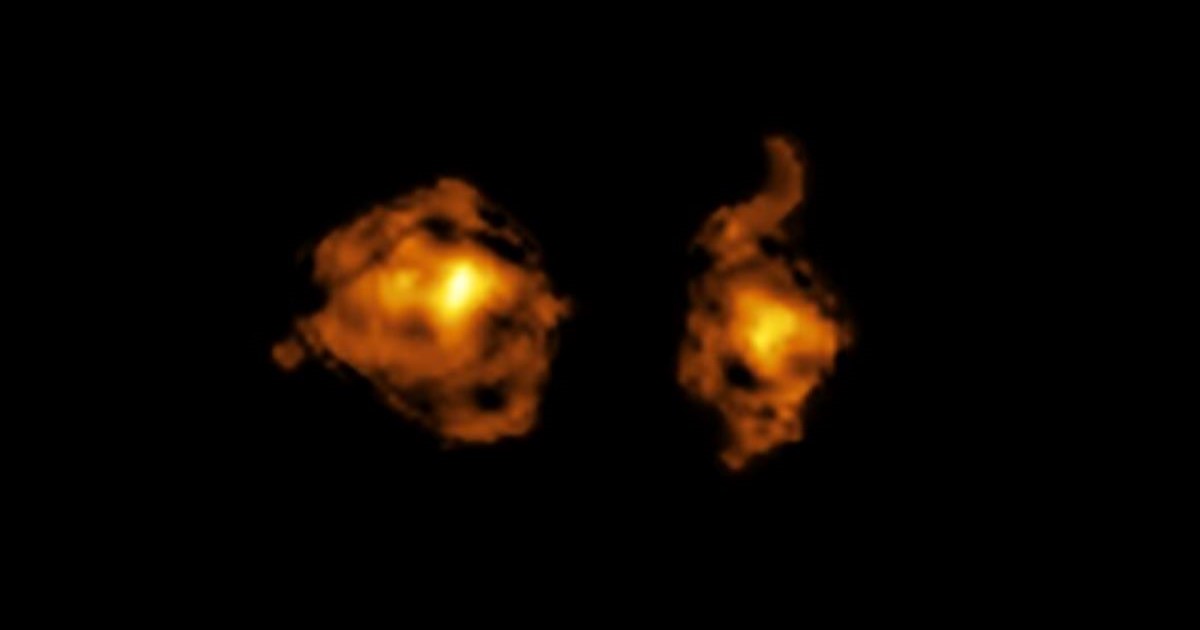
ALMA (ESO/NAOJ/NRAO)/S. Balashev and P. Noterdaeme et al.
As unpleasant as it might be, some level of fighting seems to be intrinsic to nature.
Though fighting in humans is nowadays more characterised by wars, WWE, and the odd bar fight, we see fighting in animals all the time as they compete for mates, for food, and for territory.
Even plants fight in their own way, growing taller and stronger to compete for light and nutrients.
Well, even space is no exception, and with new images from the European Southern Observatory’s Very Large Telescope (ESO’s VLT) and the Atacama Large Millimeter Array (ALMA), both based in the Chilean desert, we have our first images of true, intergalactic fighting.

DESI Legacy Survey
Of course, this isn’t the case of beings from two galaxies fighting on another.
Instead, the images – which were published in the journal Nature – show two different galaxies at war, colliding at 500 km/s, as researcher Pasquier Noterdaeme describes in a statement:
“We hence call this system the ‘cosmic joust’.”
However, this joust isn’t taking place right now. Rather, the images that we can now see are obtained using these enormous telescopes to see things that are not only far away in space, but also in time.
The cosmic joust is around 11 billion light years away, meaning that its light took 11 billion years to be visible through our telescopes – this was a joust that may well have been concluded a long time ago.

ESO/M. Kornmesser
But the most unusual yet fascinating thing about this intergalactic fight is their weapon of choice: quasars.
This kind of galactic nucleus is powered by a supermassive black hole, and releases incredible quantities of radiation. And these emissions are here being used as a weapon, as researcher Sergei Balashev continues in the statement:
“Here we see for the first time the effect of a quasar’s radiation directly on the internal structure of the gas in an otherwise regular galaxy. These mergers are thought to bring huge amounts of gas to supermassive black holes residing in galaxy centres.”
The results of the quasar are twofold. In the galaxy that is hit by the attack, the gas and dust that comprise it are weakened, leading to fewer stars to be formed. Meanwhile, the attacking galaxy’s black hole feeds on extra fuel, giving it even more power to strike back.
Though these galaxies are incredibly far away from us, the evidence is still fascinating to comprehend, and makes other galaxies feel a whole lot more relatable.
Who knew that galaxies could be bullies too?
If you found that story interesting, learn more about why people often wake up around 3 AM and keep doing it for life.
Categories: NATURE/SPACE, SCI/TECH
Tags: · alma, atacama large millimeter array, cosmic joust, eso vlt, european space observatory, fight, intergalactic, intergalactic battle, quasar, quasars, science, single topic, space, top, very large telescope

